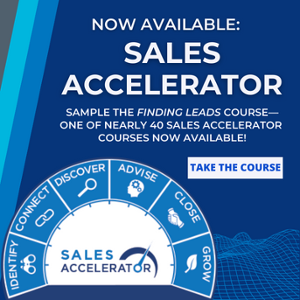
Improving the performance of a sales team, or a specific seller on the team, is a top focus for any sales leader.
Often, we hear sales managers say they just need more activity or need to add more into pending, but the answer is rarely that simple. To know what is needed to improve performance, you need start by diagnosing where the problem is and what is causing the problem.
Simply said, you need to identify the bottlenecks in your sales process because adding more into pending doesn’t do you any good if your sellers aren’t closing what they propose.
How to Identify Bottlenecks and Improve Sales Performance
 To identify a bottleneck, start with the focus on your sellers as individuals. Then, examine the key activity conversions along the sales process to find where each seller gets stuck or struggles.
To identify a bottleneck, start with the focus on your sellers as individuals. Then, examine the key activity conversions along the sales process to find where each seller gets stuck or struggles.
Once you have identified where, then you can move to what is causing the problem and develop coaching strategies to improve performance.
Let’s get specific – here are three common bottlenecks and tactics you can use to improve performance.
1. Increasing the Number of Quality Initial Discover Meetings
This is an easy one to identify, but the underlying reason why can be a little more complex than they need to make more calls. First, you need to determine if the problem is not enough meetings or not enough meetings with quality prospects.
If the challenge is not enough meetings, look to their approach – both their Valid Business Reason (VBR) and the frequency of their approach.
- What does their VBR look like?
- Do they start with an insight?
- Do they give the prospect a reason to want to meet with them?
- What is the frequency and cadence of their approach?
- Are they following the Don’t Give Up process or are they giving up too early?
If the challenge is not enough meetings with quality prospects, work with them early on in their prospecting. Roll up your sleeves and help them identify better prospects before they begin their outreach to get an appointment. Remind that the goal is not to get any appointment, but a good appointment that they can turn into a win.
2. Converting More Discover Meetings to a Proposal
Look to the number of initial discover meetings that move to a second meeting to determine if this is a bottleneck.
If you have a seller on your team that converts 60% of their discover meetings into a proposal, that means four of every 10 meetings don’t go anywhere, and that is a lot of wasted time! You want to work with that seller to get closer to 85-90%, but you need to determine why they aren’t converting. To figure that out, look to the quality of the prospect and the effectiveness of your seller at the discover meeting.
The quality of the prospect usually bubbles to the surface when you hear from your seller that they determined the prospect didn’t have a budget or they don’t have a need we can help with at this time.
If this is the case, work with them on how to better qualify their prospects at the start of the sales process, or quickly in that initial meeting. You want to make sure they are not wasting time and energy on prospects that won’t move forward in the sales process. The better sellers get at determining if the prospect has the potential to spend at the level needed to be successful, the less time they will waste meeting with unqualified prospects.
To determine if your sellers needs analysis skills need improving, join them in the field as frequently. Let them lead the call, your job is to be a coach and observe to see what they do well and where they can improve.
- Did they do their homework?
- Do they ask informed questions?
- Are they actively listening to prospects responses and asking appropriate follow-up questions?
- Are they providing enough value to earn a second meeting?
- Are they asking for a second meeting?
3. Closing Pending Business
Again, this is another one that it is fairly easy to identify. You have a seller with a large pipeline of pending deals, but nothing moves to a decision or they lose much more than they win. To identify why it is happening, look to their proposals and the frequency of their follow up.
Let’s begin with reviewing proposals.
- Is the proposal specific to the prospect (beyond their name and a logo) or can you simply take one business name off and plug in another?
- Do they state the desired business results and how success will be measured?
- Is there a tailored solution in response the business results the client is needs to achieve?
If you are noticing that the proposal communicates generic value, but doesn’t create specific value for the prospect, you likely have a seller who is not doing a good enough job in their discover meetings. They might be rushing to the proposal to sit and wait for a decision, vs. making sure they have the right information before they develop the proposal.
If their proposals are strong, ask about their follow-up process. Good sales people have a follow up sequence, whether they realize it or not. They are timely in their follow up calls and interactions. They bring value beyond “just checking-in to see if you made a decision or have any questions.”
80% of sales require five or more follow up calls or interactions to close, so make sure they are engaging in the type of follow up needed to move to a close. Additionally, most deals that are pending more than 30-days fail to close, so you want to make sure that their follow up happens within 30 days
Bottlenecks in your sales process can create havoc on your teams performance but improving your ability to quickly identify and diagnose them can create big opportunities to propel your team forward.



